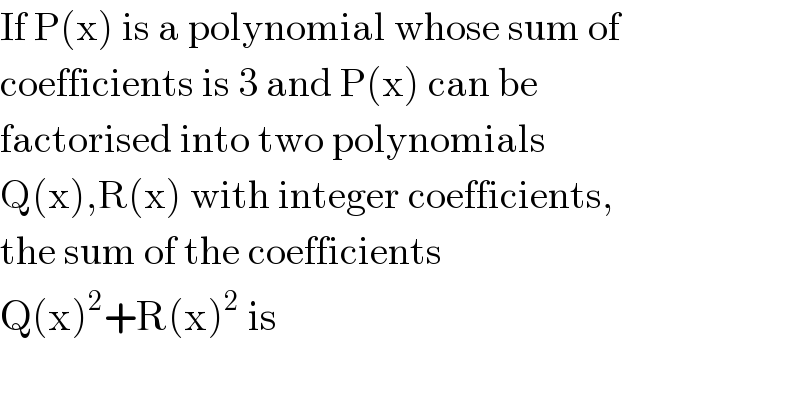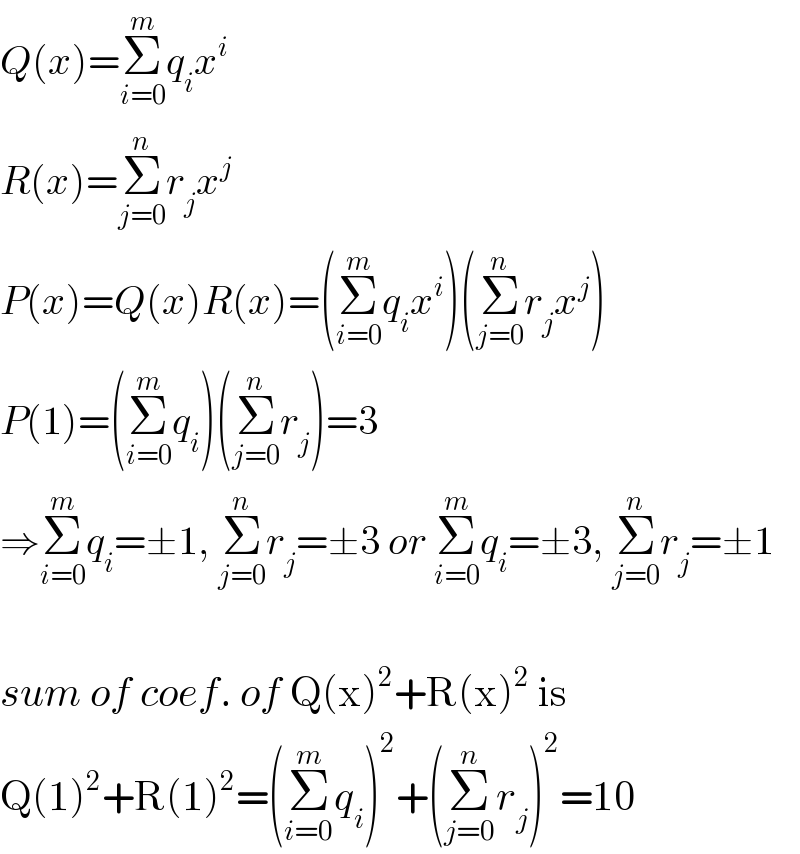
Question and Answers Forum
Question Number 110374 by Aina Samuel Temidayo last updated on 28/Aug/20

Answered by mr W last updated on 28/Aug/20

Commented by Aina Samuel Temidayo last updated on 28/Aug/20

Answered by floor(10²Eta[1]) last updated on 28/Aug/20
![P(1)=3 P(x)=Q(x).R(x) F(x)=Q(x)^2 +R(x)^2 F(1)=Q(1)^2 +R(1)^2 Q(x)=((P(x))/(R(x)))∴Q(x)^2 =((P(x)^2 )/(R(x)^2 )) ⇒Q(1)^2 =((R(1)^2 )/(P(1)^2 ))∴Q(1)^2 =((R(1)^2 )/9) F(1)=R(1)^2 .((10)/9) since Q(x) and R(x) ∈ Z[x] ⇒the sum of coefficients of these polynomials also have to be an integer. so 3=R(1).Q(1) ⇒R(1)=3 and Q(1)=1 or R(1)=1 and Q(1)=3 or R(1)=−1 and Q(1)=−3 or R(1)=−3 and Q(1)=−1 ∴F(1)=((10)/9)R(1)^2 =10 or ((10)/9) but F(x) ∈ Z[x] because F(x)=Q(x)^2 +R(x)^2 so F(1)∈Z⇒F(1)=10](Q110386.png)
Commented by Aina Samuel Temidayo last updated on 28/Aug/20

